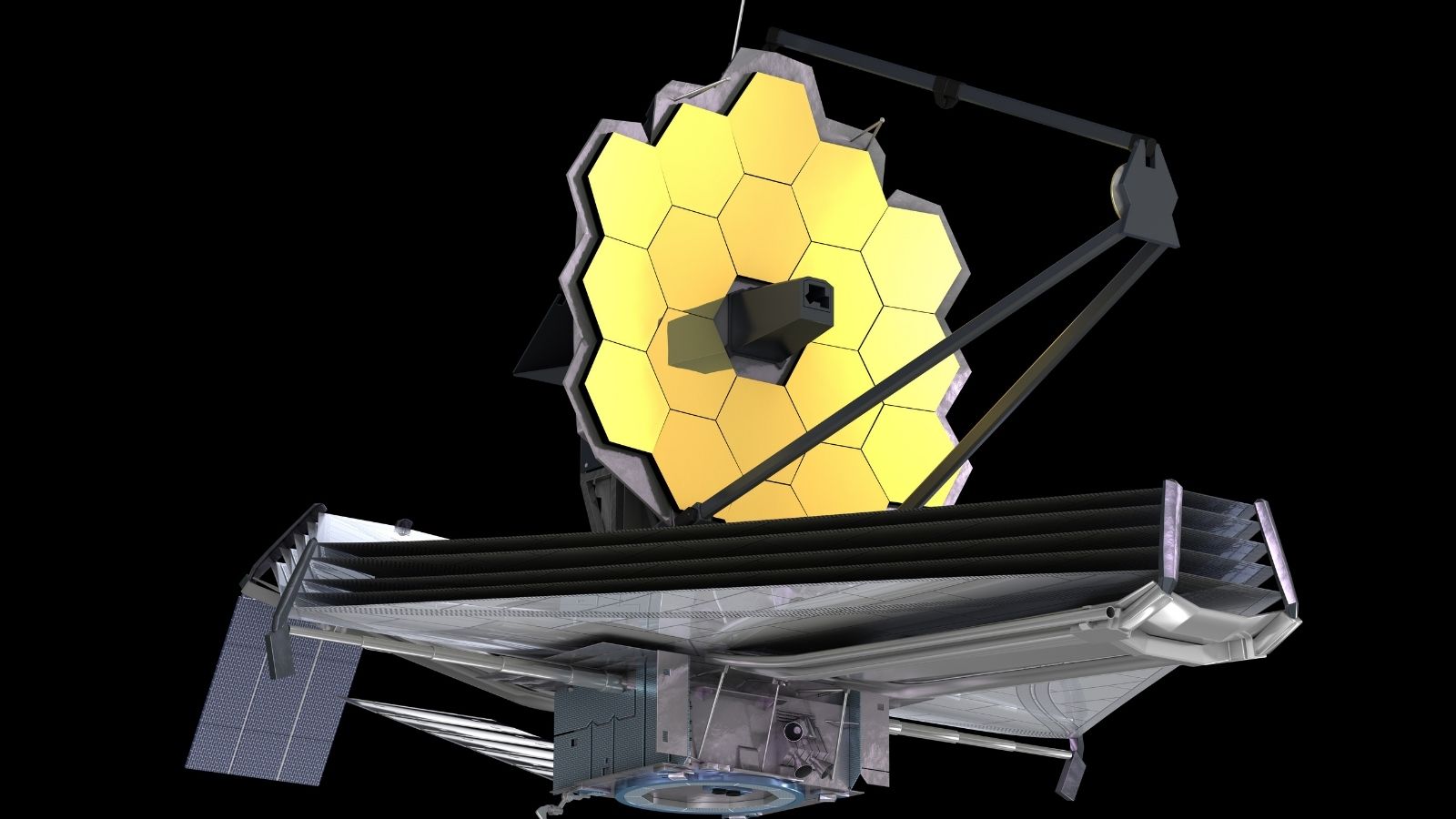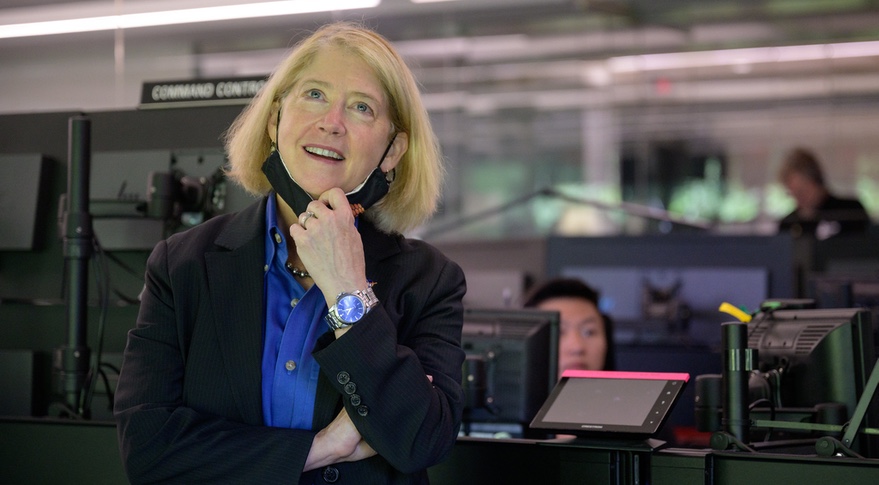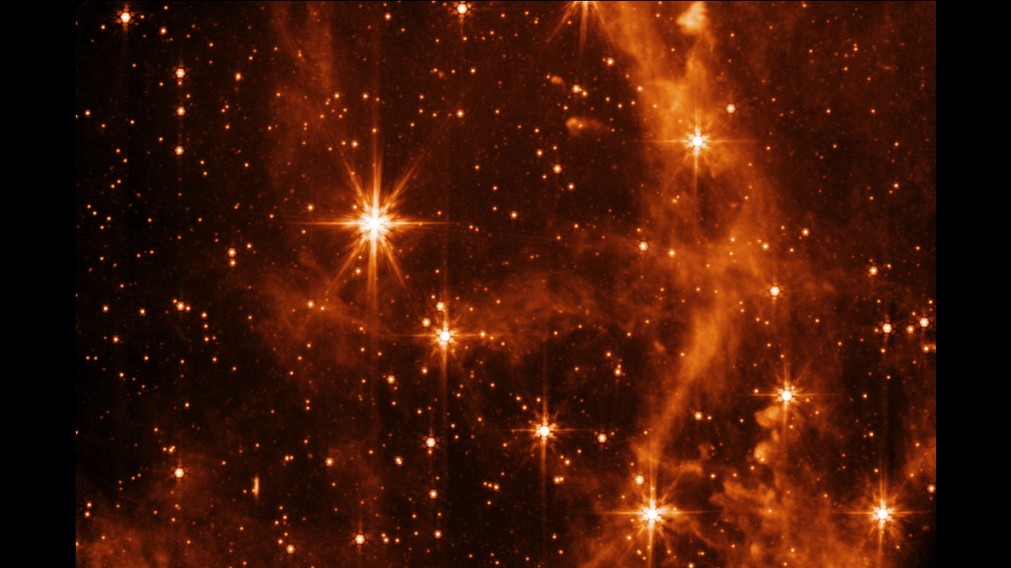
James Webb Telescope. Image courtesy of: NASA
With positioning and activation of the James Webb Space Telescope (JWST) nearly complete, 15 of its 17 observing modes now working, project officials and NASA leadership are set to release the first set of “early release observation images” including the deepest ever image of our galaxy on July 12th, 2022.

NASA Deputy Administrator Pam Melroy views raw images from the James Webb Space Telescope on June 29th. Image courtesy of: NASA/Bill Ingalls
During a media event at the Space Telescope Science Institute (STScI) on June 29th, project managers and scientists said the telescope is already collecting observational images that NASA, along with the European Space Agency and Canadian Space Agency will release in conjunction.
JWST’s performance is a marvel of contemporary scientific creation capable of ultra-fine calibrations with the telescope able to limit optical diffraction down to 1.1 microns. Lee Feinberg, JWST optical telescope element manager at NASA’s Goddard Space Flight Center credits this achievement to the immense attention to detail during the telescope’s development and extensive testing. “We knew how significant this observatory is. It’s the biggest, most complex science mission, potentially, that NASA has ever built,” he said.
Originally JWST was designed for a seemingly short 10-year operational life. However Pam Melroy, NASA Deputy Administrator, noted that the success of the Ariane 5 heavy-lift rocket launch last December helped conserve fuel originally reserved for trajectory corrections, extending the telescope’s operation at its current location point for at least 20 years.

Image of the Large Magellanic Cloud taken by JWST's MIRI instrument. Image courtesy of: NASA/ESA/CSA/STScI.
The entire scientific community waits with bated breath to see the images which will provide the deepest and most substantial look into our galaxy thus far. The media release is set to include color images and spectra. Those observations will “demonstrate to the world that Webb is, in fact, ready for science, and that it produces excellent and spectacular results,” said Klaus Pontoppidan, JWST project scientist at STScI. “It’s also to highlight the sheer breadth of science that can be done with Webb and to highlight all of the four science instruments.”
Project scientists are tight-lipped about the images right now. While the total list of assets remains secret, NASA officials are dropping giddy hints about what will be released on July 12. NASA Administrator Bill Nelson said one will be “the deepest image of our universe that has ever been taken,” better than various “deep field” observations by the Hubble Space Telescope. He went on to say, “This is farther than humanity has ever looked before,” Nelson said. “We’re only beginning to understand what Webb can and will do.”
Thomas Zurbuchen, NASA Associate Administrator for Science, said the early release observations will also include spectra of an exoplanet, which can help scientists determine the composition of its atmosphere. "It's really hard to not look at the universe in a new light and not just have a moment that is deeply personal," he said. "It's an emotional moment when you see nature suddenly releasing some of its secrets. and I would like you to imagine and look forward to that”, he said.
Both Melroy and Zurbuchen are a few of the lucky space-lovers who have been able to view the images before their public release. “What I have seen just moved me,” said Melroy, “as a scientist, as an engineer and as a human being.”
Grab some tissues and a celebratory drink, this one is going to be HISTORIC.